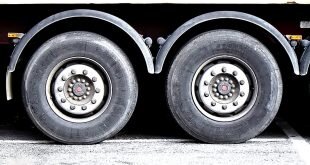What to keep in mind when choosing a new business vehicle

Making investments in a business is a crucial step to achieving growth. Every business will have different areas where they believe their investment will be best spent. The important thing is to identify where that area is and make the right decision before investing. This requires businesses to understand their shortcomings and analyse their performance to determine where they can improve.
For businesses that operate a commercial fleet of vehicles, one area of investment may be increasing the number of vehicles they have or updating their current fleet to more modern vehicles. While both of these options sound great and that they would immediately benefit a business, there are a few things that businesses should keep in mind when choosing a new business vehicle.
Environmental impact
The environmental impact of a vehicle is something that individuals and businesses both have to consider when choosing a new vehicle. Fuel economy is as important to families using their car to go to the shops as it is for businesses delivering goods or services to their clients.
This issue has become important over recent years, with rising fuel prices and the introduction of stricter environmental laws, particularly in city centres. If we look at London as an example, the city has had a congestion charge in place for years, but in 2019 they went further and introduced an Ultra Low Emission Zone (ULEZ). This zone enforces significant fines on people using vehicles inside the zone which do not comply with emission regulations.
For businesses that are either based inside the zone or frequently travel into it, they now have to think carefully about the vehicles they are using, and as such, any potential new vehicles they add to their fleet. With the zone set to expand to cover more of London later in 2021, this is not something businesses can ignore. Any new vehicles a business adds to their commercial fleet should be in line with current emission regulations to avoid additional running costs in the form of fines from entering the ULEZ or similar zones in cities around the world.
To buy or lease
When investing in a new business vehicle, there are so many different options based on what the vehicle needs to do. However, businesses also have options with how they want to invest. Buying a new vehicle outright or leasing it for a set period of time both have their pros and cons, and businesses must consider them before making a decision.
Depending on the financial situation a business finds itself in, it may be more beneficial to lease a vehicle rather than buy it outright. By doing this, businesses also give themselves more flexibility to upgrade to newer vehicles when they come along, which, as mentioned above, can be useful when dealing with ever-changing environmental laws.
However, buying a commercial vehicle outright also has benefits. Depending on the tasks required for the vehicle, it may need modifications made to it. This can be more challenging to do when a business does not own the vehicle outright, and any changes would likely need to be agreed with the leasing company beforehand.
It’s important to weigh all the pros and cons of buying and leasing before ultimately making a decision on a new vehicle.
Is this the right place to invest
It can be very tempting for businesses to think they need to add additional vehicles to their fleet to improve their productivity and customer service. In reality, though, improvements can often be made without adding more vehicles. There are lots of different ways companies can improve their performance by making operational changes.
One such example of this is by improving the routes which commercial drivers take during the workday. Route planning is a crucial element of any commercial fleet, and by making improvements in this area can lead to significant improvements in productivity, fuel usage, and customer satisfaction.
Many businesses have been able to achieve these improvements by installing vehicle tracking technology across their commercial fleets. By doing so, they can gather far more detailed data showing how their vehicles are working and where they can improve. Route data can show areas where drivers are continually getting stuck in traffic or other historical patterns, reducing productivity. Having access to this data can allow fleet managers to develop alternative routes, which will be more productive and efficient. This can lead to improved fuel usage, and by reaching more clients each day also improve customer satisfaction.
By investing in technology that can help a business’s existing commercial vehicles, money can be saved when compared to the significant expense that comes from investing in additional vehicles. This is certainly worth keeping in mind for smaller businesses that may not have the amount of money available to invest as larger competitors.
Overall, businesses that operate commercial vehicles have a variety of options when it comes to expanding their fleet. However, as highlighted, there are some key points to think over before rushing out to the dealership and coming back with that new shiny set of wheels.

